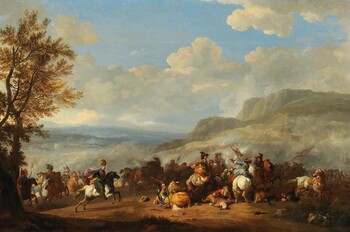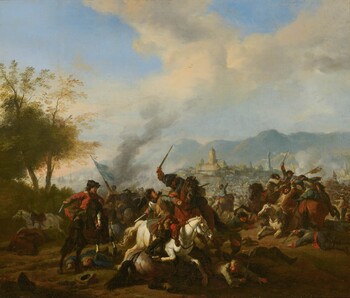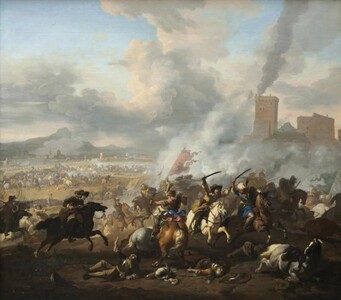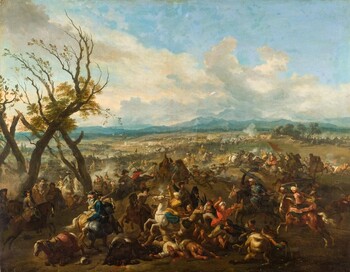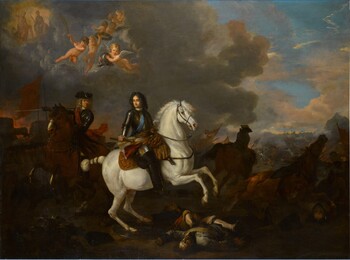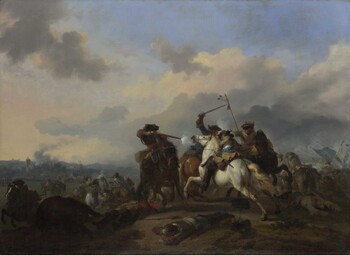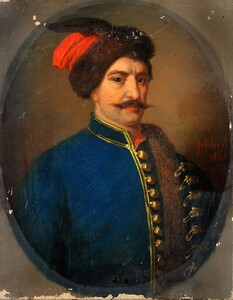Jan van Huchtenburg
John Churchill, 1st Duke of Marlborough and Prince Eugene of Savoy on horseback at the Battle of Blenheim (Hochstedt) 13/08/1704
Oil on canvas : 115,5 X 155,3 cm
Signed lower centre “Hootenburgh”
Sold at Sotheby’s London, 28/04/21
For 35.280 £ = 40.605 €
This is a comparative item
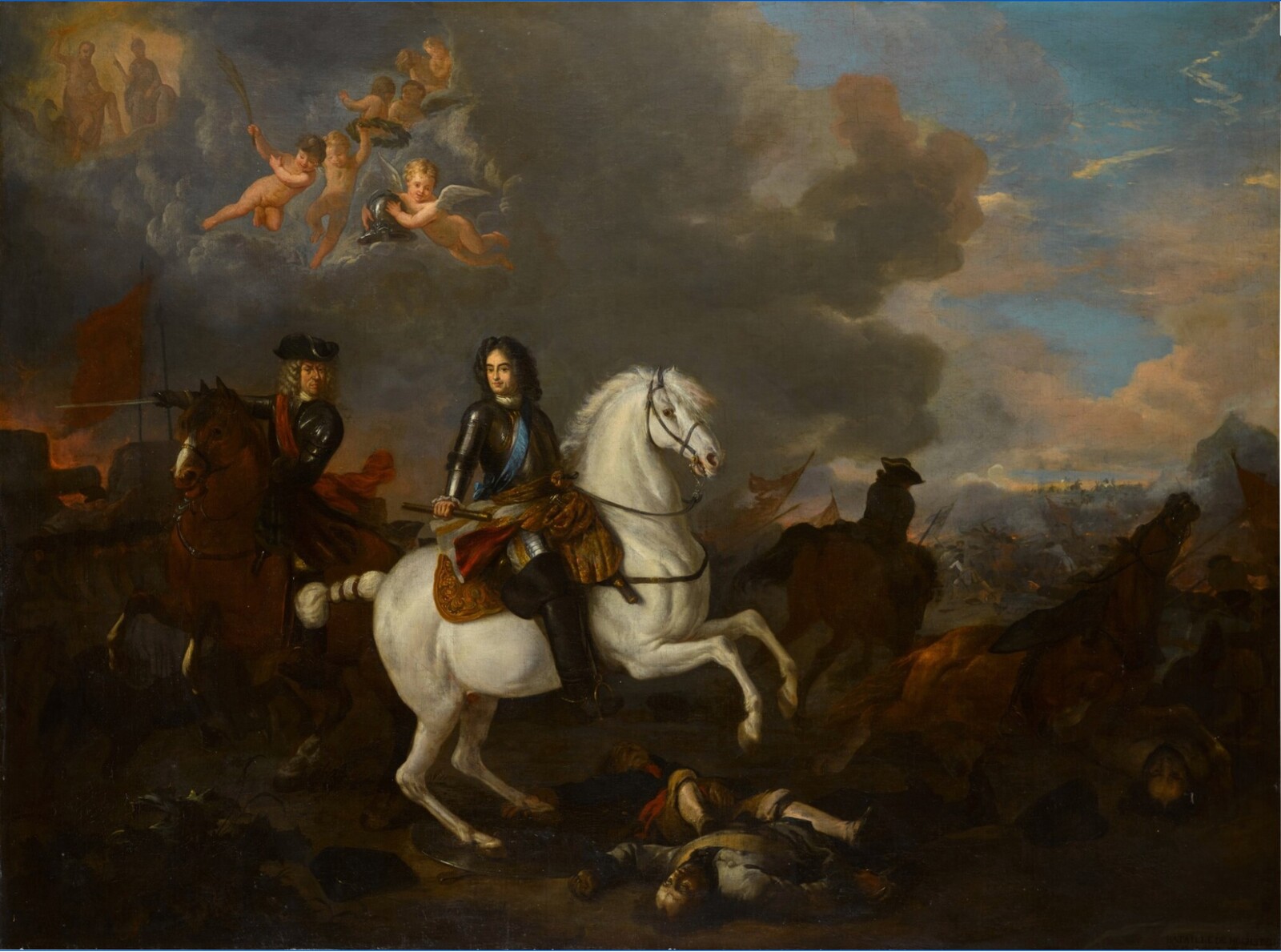
Painting for Sale
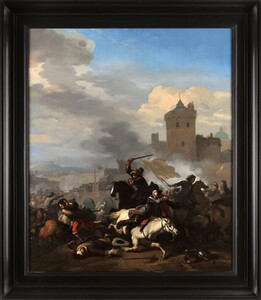
Huchtenburg, Jan van
"Kuruc rebels fighting against an Austrian Habsburg army "
Comparative paintings
Click photos for more details

